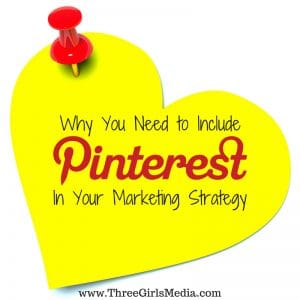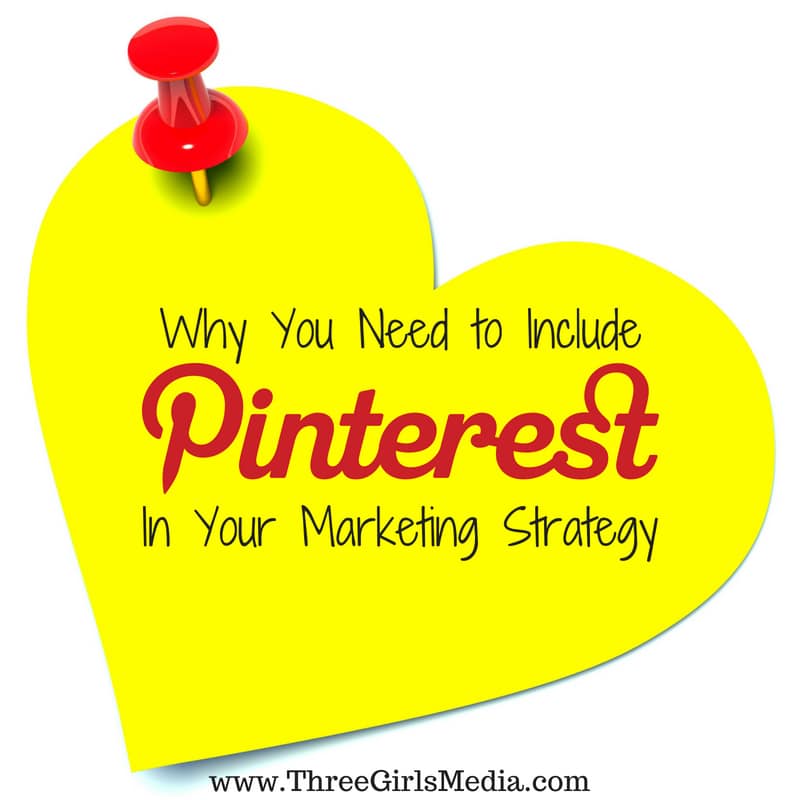
If you’re a retailer and not on Pinterest, you may be missing out on a big opportunity to connect with your audience through the social search engine! Learn why in this article.
Did you know July is Independent Retailer Month? It’s a month to recognize smaller, local retailers who put their hearts and souls into the products they provide for customers. No matter what size retailer you are, big or small, Pinterest is one of the best platforms you can invest in to get your products to potential customers, and as such, needs to be part of your marketing strategy.
If you’ve been contemplating using Pinterest for your business, keep reading! In this article, you’ll learn about Pinterest’s prime users (also referred to as pinners), how to use the platform organically and how to advertise on it to maximize your efforts of sharing your brand with the world.
Who Is On Pinterest
Do you know who your consumers are? As a small to medium to size retail business, a critical part of having a successful marketing strategy is knowing who your consumers are. Information like age, gender, income and the like are critical for understanding your target market, but do you know where they are hanging out online? Which social media sites do they spend time on? How are they using their preferred search engines?
Pinterest is unique in the fact that it’s not technically a social media platform, but a search engine that people and businesses can use socially. So, what does their typical user look like and how do they use the platform?
With more than 200 million Pinterest users, here is some insight on their demographics straight from the source – Pinterest.com.
- 70 percent of the website’s users are women
- 50 percent of the users are from outside of the United States
- 60 percent of users have children under five years old
- 50 percent of millennial users pin at least once a month
- 40 percent of pinners have a household income of at least $100,000 dollars.
- 80 percent of visitors use the Pinterest mobile app.
Now that you know a little about the average Pinterest user, let me shed some light on what they do while visiting the website.
- 72 percent of pinners use the website to find ideas that will help them in their everyday life
- 39 percent of users are active shoppers spending 29 percent more than people who are not on the social search platform
- Pinners are more likely to purchase fashion, cosmetics, home, auto and food items online than those who are not on the platform
- 61 percent of people using the website have discovered a new brand or product from a promoted pin
- 50 percent of pinners have made a purchase after seeing a promoted pin
Overall, people on Pinterest use the site to increase their quality of life through finding inspiration from others and searching for new, unique ideas. From party planning to home décor and more, Pinterest is the perfect place for consumers to gather, making it a prime place for retailers.
With this information at hand about who the average user is on the social search engine, you’re now ready to start using the platform to share ideas that inspire your customers.
How to Use Pinterest Organically as Part of Your Marketing Strategy

Pinterest users use the platform to discover new inspiring ideas, products and brands. As a retailer, there is a great opportunity to get your business seen on the website. Here’s how to create pin-worthy posts that will help build your following.
Before we dive into how to advertise on Pinterest as part of your marketing strategy, it’s important you first build a foundation with organic (unpaid) pins. Like any other social strategy, forming a base and consistently adding new content creates your brand’s credibility, and in the case of Pinterest, they also give you content to advertise with. As you begin cultivating your Pinterest following, here are six tips to keep in mind.
- Focus on Your Images
Since Pinterest is dominated by images, find a way to make yours stand out. Original images get re-pinned more often than generic stock images. As a retailer, this is the perfect opportunity to share high-quality images of your products. Use interesting angles that highlight your items and spend time on editing, adding text to the image to introduce the pin and get noticed quickly by people who may overlook the caption. Canva.com is a fantastic, free tool that is perfect for this!
- Pin Often
Pinners will follow boards with frequently updated content over boards with few pins. Share new pins often and don’t forget to re-pin ideas too! Remember, Pinterest may technically be a search engine, but it’s still a social platform and providing pins relevant to your audience keeps your content interesting and worth following.
- Follow Other Pinners
Following other people and re-pinning their pins is how Pinterest becomes social! Follow boards and pinners with similar interests and they will not only supply more ideas for content but will make your brand more visible. People are likely to follow brands that interact with lots of other people.
- Make Your Boards Specific
Pinterest allows you to have unlimited boards, so feel free to get specific. For example, if you’re a retailer of kitchen and culinary items, sharing recipes would be a stellar idea; however, instead of creating one board for food, create separate boards for soups and salads, another for breakfast, maybe even one for casseroles – get creative. You’ll be able to target a smaller audience which means you can create more personalized pins.
- Create Secret Boards
Secret boards allow you to pin items without sharing them. This can come in handy in your social media marketing strategy because you can pin ideas specific to the particular campaign. For instance, you could create a secret board filled with pins you want to share in upcoming social media posts.
- Get Social
As I said earlier, an important part of social media marketing is being social. Make sure you’re re-pinning, commenting and liking other’s ideas on a regular basis to increase your followers. Also, don’t forget to comment back on your pins! This is a site for interacting and sharing inspiration with others; the more you share and interact the stronger your Pinterest following will be.
How to Advertise on Pinterest
Once you have established a strong organic base on Pinterest, you’re ready to step up and start advertising on the platform.
Why should you include advertising on the social search engine as part of your marketing strategy? Pinterest ads look like and show up in the audience’s newsfeed as a regular pin would. According to Hootsuite, “Pinners are open to ads because they fit seamlessly into the platform and provide useful information about where and how to buy products they care about.”
- Choose Your Pinterest Ad Goal
The first step to creating your campaign is to determine which goal you want to achieve with your Pinterest advertising.
As a retailer there are a few different types of campaigns to choose from:
- Traffic: This pay per click ad type sends people directly from Pinterest to your website.
- Awareness: Unlike traffic ads that drive people to your website, this type of Pinterest ad has the goal of building brand awareness by introducing your business to people who have never heard of you before. Additionally, you only pay per every 1,000 impressions.
- Engagement: Engagement ads are designed to encourage users to directly interact with your content by saving or clicking your promoted pin without leaving Pinterest. Unlike the other two ad types, with this one you pay per engagement action: a close-up, save or click.
- Video Awareness: This ad type is similar to an awareness campaign in the fact that it is meant to gain awareness, but it’s different as it uses promoted video pins instead of images. This ad is also paid per 1,000 impressions.
- App Install: In the event you have an app for your retail business, this campaign is designed to get you more installs.
- Determine Your Campaign Budget and Placements
After you have decided on the main marketing strategy for your Pinterest ads you will move onto determining your campaign budget. It is important to note that your campaign can have multiple ads with different budget amounts and dates; this is to determine the maximum budget for your campaign as a whole. In this step, you will also decide if you want to stick with the automatic placement of your ads or if you want them to be seen in specific spots (i.e. while people or browsing or on their feed).
- Create An Ad Group
After you have decided on the campaign budget and placement point, you will next create an ad group and choose the budget.
- Choose Your Target Audience
Remember how we talked about your audience and the types of people on Pinterest earlier? This is where the information is going to come in super handy. You are able to target Pinterest ads by numerous factors including:
- Interests
- Location
- Language
- Device they use
- Gender
- Keywords
Plus, you can also use a pre-built target audience. What is that? According to Hootsuite, “Pre-built audiences target groups of Pinners based on visitors to your website, a list of customers you upload, an engaged audience that has engaged with Pins from your domain, or an act-alike audience that behaves similarly to one of your existing audiences.”
- Choose Your Bid Amount
The bid is the most you are willing to pay for each desired action based on the campaign ad type chosen in the first step.
- Pick Your Pinterest Pin to Promote
All the work you’ve done building your foundation before you began advertising is now coming back to reward you beyond the organic reach you’ve started to develop. On Pinterest, you are only able to promote Pins that you have already added to a public board.
- Decide Where to Send Pinners
This is an important step in the ad set up. Wherever you send a person who clicks on your link you need make sure it is relevant to the ad and has a specific purpose.
Once you are finished with this step you will send your pin off for review where it will be approved by Pinterest.
- Monitor Your Pinterest Ad Campaign
This is the final step in the Pinterest ad process, but one you don’t want to forget. Monitoring how your ads and campaigns perform will tell you a lot about your customers, what they want, what they like to see and interact with, and ultimately, will help you optimize future ads to get the strongest return on your investment and increased sales.
As you can see, Pinterest is full of opportunities for retailers of many sizes and should be a focus of your marketing strategy. Have you seen success with Pinterest? Share your tips and tricks for using the social search engine below and check out these other social media articles from Three Girls, A Dog & A Marketing Blog!
- How To Write Killer Social Media Updates that Stand Out
- How Small Businesses Can Set Up Effective Social Media Ads
- How to Create Stellar Updates for Each Social Media Platform
Special Offer:
Sign up for a complimentary consultation during December and receive an Annual Marketing Planning Guide valued at $475! We offer a 30-minute phone consultation with our CEO, and can answer your questions and discuss your specific marketing needs - no strings attached. Call 408-218-2391 or contact us today to arrange your consultation!


